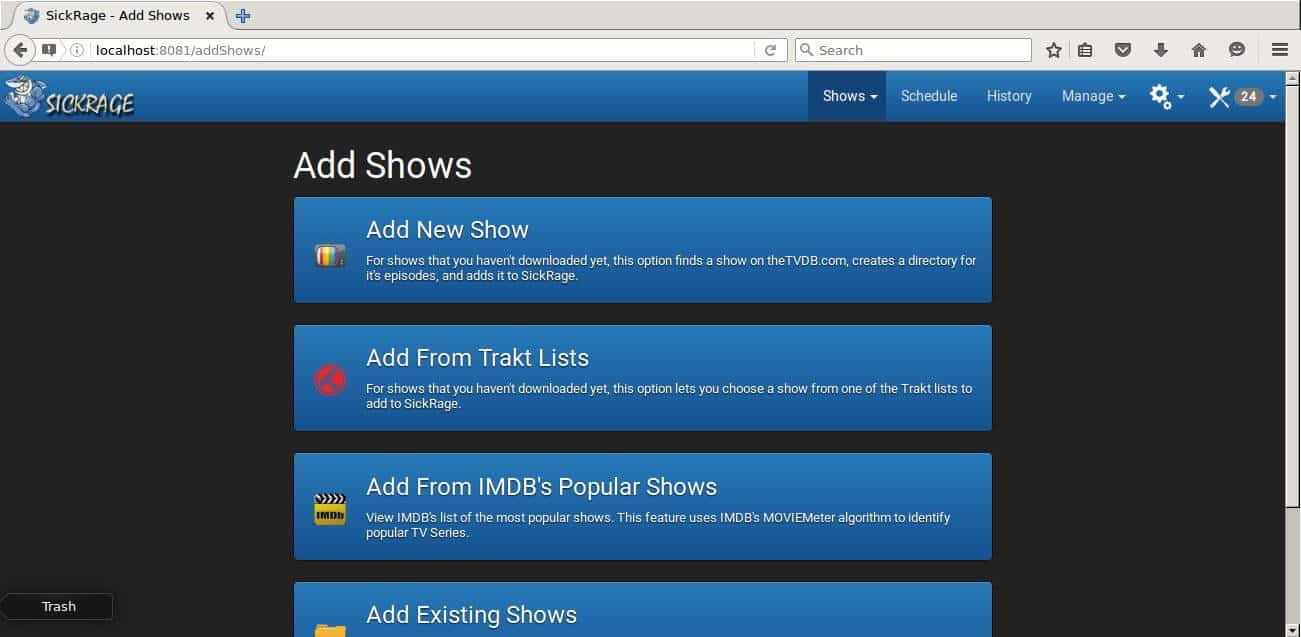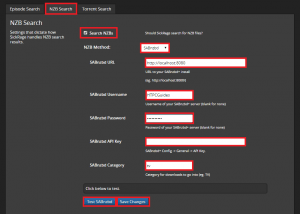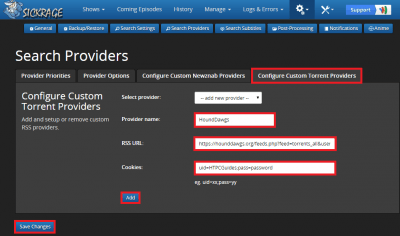

Then perhaps the container/virtualization stuff. As that limits your selections for the higher layers. I think the first thing to do is pick a disk management technology. That would give you a setup much like Proxmox, just using Docker containers instead of LXC.
Sickrage unraid setup install#
You could also install Docker directly onto the base Linux install. One downside there is disk I/O takes a hit as it has to pass over a VirtIO channel, but the Linux drivers are pretty good and I expect the impact would be small. If I were to go the Docker direction, I think I would try a basic Debian or other Linux, with whatever file/RAID system I chose to use with Rancher running in a KVM. Docker seems to have more options for pre-made containers. Proxmox has some other features that might be interesting like Ceph and clustering, but I don't use them. I think the end result is pretty similar though.

I've never used Docker, so I can't really compare them. If you go with Docker, those are available as Docker images as well. I run the usual suspects in lightweight LXC containers and am happy with it. It's not much more, just applying the updates seems a little less simple. You seem aware of the downsides, so I won't go into that.Īll the container stuff works well in Proxmox as well, though maintenance is a little more involved than a Docker setup. That's a bonus for ZFS, it's quite compatible. At the time, BeHyve couldn't boot Linux on my hardware, so I decided to just use Linux and went to Proxmox/ZFS/containers. My current hardware started on FreeNAS, but I moved from it as I couldn't get Crashplan to work reliably under it. FreeNAS jails work pretty well there as well.

You can run them on top of almost any Linux setup using Docker or other container technology.


 0 kommentar(er)
0 kommentar(er)
